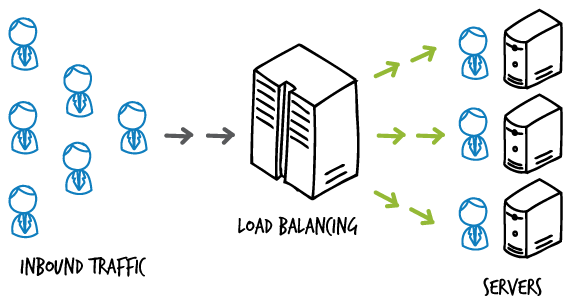October 18, 2016
The Layman’s Guide to Load Balancing
Have you ever calculated the cost of losing out on clients due to temporary technical disruptions? It is estimated that website owners can lose as much as $5,000 per minute due to unplanned downtimes. Are you sure that you’ve taken all the necessary steps to ensure uninterrupted business continuity at all times? Load balancing allows you to distribute virtual workloads across multiple nodes and effectively balance HTTP traffic over several servers so that you can ensure high availability, continuous uptime and uninterrupted performance around the clock.
Why You Need Database Load Balancing
Load balancing keeps your website up even when the traffic spikes, by distributing all the incoming traffic across the server pool. It helps high-traffic websites serve thousands of requests from clients in a fast and reliable manner while returning the right text and images even with a high volume.
A load balancing software sits right in front of your server pool keeping a continuous check on client requests to maximize capacity utilization and delivery speed. When one server goes down, it automatically redirects the traffic to the remaining servers to:
- Prevent network overloading
- Uniformly distribute client requests
- Ensure high availability even as your website popularity grows
When to Use Database Load Balancing
Load balancing software is commonly used when:
1. Limiting the Available Points of Failure
Restricting failover and redundancy works to increase your uptime. If any node in your cluster experiences a hardware or software failure, load balancing can redistribute the traffic to the remaining nodes so that your website remains up and unaffected.
2. The Infrastructure is Growing
When websites grow in popularity, enterprises need to go beyond the conventional single server configuration and upgrade to include several robust servers. This creates the need for a control point that facilitates speedy changes in the back end for efficient management of traffic flow. At this point, an enterprise can leverage the power of multiple servers with a load balancing software.
Commonly Used Load Balancing Techniques
Different load balancing techniques come with different benefits but the method you choose to balance your traffic will depend on your specific business needs:
1. Round Robin
This approach of load balancing facilitates sequential distribution of requests across multiple servers by sending traffic to every single node in succession. It evenly distributes the traffic, but the only limitation is its inability to consider the existing load of the nodes.
2. Least Connections
This method works on the basis of available open connections and directs the traffic to the server that has the least active connections between the server and the software. This method is relatively efficient but does not take the responsiveness of the nodes into account.
Choosing the Most Appropriate Load Balancing Solution
Here is a quick check-list if you are planning to load balance your database. Look for a database load balancing solution that:
- Enables you to manage very high loads at peak performance across multiple data centers
- Automatically manages your SQL traffic while ensuring transactional integrity
- Facilitates application-level control with the highest performance
- Enables rapid and reliable support for SQL Server Always On load balancing that is geo-aware
- Supports read/write split for increased availability and instant scaling
- Prevents overloading and downtime with surge queue
- Routes query without needing any changes to the application
- Performs connection pooling to facilitate faster access
Finally, the most important consideration is the flexibility to limit the load temporarily and reduce error messages to build an optimized delivery network.
About the Author:
A self-proclaimed tech geek, with a passion for ScaleArc’s disruptive technology innovation in database load balancing. Tony has a passion for dissecting tech topics such as transparent failover, centralized control, ACID compliance, database scalability and downtime effects. On his days off, he can be found watching sci-fi movies, rock climbing or volunteering. – Image Source – DataQuest
Share article
